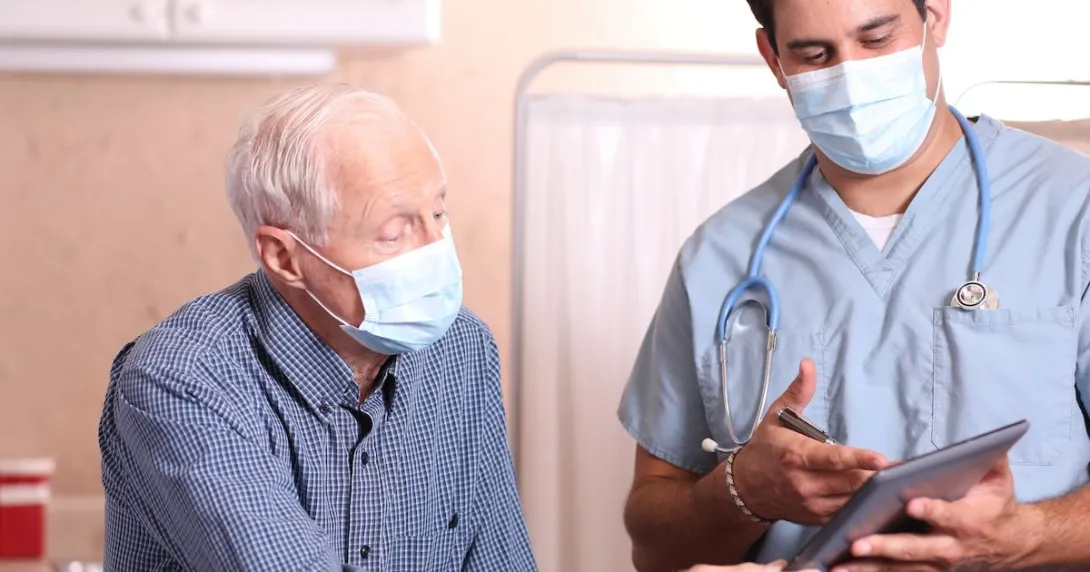
SSM Health Medical Director Dr. Joseph Eckelkamp
Photo: Dr. Joseph Eckelkamp
Diabetes is the second most common cause of irreversible vision loss in the United States. Twenty-five percent of individuals with a new diagnosis of diabetes have diabetic eye changes. Despite this high prevalence, 40-60% of individuals living with diabetes do not receive the recommended diabetic eye exam.
THE CHALLENGE
"Our patients are scared of diabetes and even more scared of losing their vision and other diabetic complications," said St. Louis-based health system SSM Health Medical Director Dr. Joseph Eckelkamp. "They see the value of screening for and treating these complications. Despite this, our patients had just as many struggles completing the eye exam as others.
"Their own circumstances stopped them from living the proactive lives they desire," he continued. "The time and resource demands are just too great. Many people work two or three jobs, serve as primary caregivers for children or elderly family members, or bring communities together. Many live in healthcare deserts with limited access to eye care professionals. Others rely on others for transportation, where coordinating a 60-90-minute time commitment to get home and back is just too much."
When faced with these competing responsibilities, patients must choose between addressing an important immediate need or a possible future problem.
"They make the only rational, obvious choice: They delay their eye exam until it is convenient – when there is a problem," Eckelkamp said. "By then, it often is too late to restore vision entirely. Then it is an urgent, important problem that impacts their ability to work or be a spouse, parent or child caring for a loved one.
"We have tried many approaches to overcome these barriers, including forming strategic partnerships with community eye care professionals, proactively informing optometrists, generating letters for patients to bring to their eye care professionals, and following up on medical claims," he added. "Each of these strategies addressed facets of the problem but did not address the patient's needs. As a result, patients struggled to obtain their exams and work with the care team to coordinate together."
Then SSM Health found autonomous artificial intelligence technology, which changed everything.
PROPOSAL
Through the AI IT vendor Digital Diagnostics, SSM Health was able to provide a point-of-care system within care teams addressing all the other facets of diabetic care and delivering near-instantaneous results.
"Consequently, there was no uncertainty about whether the exam had been completed – it was," Eckelkamp explained. "Once results were available, both the patient and the care team had a clear path forward: Either return for routine follow-up or see an eye specialist to prevent potential vision loss. This approach forged the care team and patient around a shared goal – optimizing all facets of the patient's health.
"By implementing the AI system, we significantly reduced the burden on our patients, their families and their communities," he continued. "Patients could receive their screening during a visit to their primary care provider – their trusted source of care – making it a true one-stop shop."
They no longer needed to arrange childcare or eldercare, find someone to cover their shift, or navigate complex transportation across the city, he added. And they avoided the stress of a second appointment, where timing and availability were uncertain.
MEETING THE CHALLENGE
"Topcon cameras were placed in our primary care offices, which also served as the major referral base for endocrinology," Eckelkamp noted. "Digital Diagnostics provided training and software for our teams. Our office provided a single, dark room to optimize the diagnosability.
"Each treatment team had slightly different workflows," he continued. "Patients were identified during the team's pre-visit planning. Upon arrival, either our front desk or our rooming staff would complete the exam by standing order. The front desk especially appreciated the new involvement in the patient's care."
After the exam was completed, the result was sent directly to the Epic EHR, creating a seamless care continuum. The patient then discussed the result with the treating provider as to next steps. To ensure care teams were trained and maintain quality assurance, the AI vendor also reviewed images taken.
"These images, accessed through the vendor's SphereDx platform, were used to highlight reversible errors to help educate our treatment teams," he explained.
RESULTS
SSM Health achieved a 15-20% increase in diabetic retinopathy screening. Of those screened using this technology, 20% were identified as having diabetic eye changes.
Not only is SSM Health diagnosing individuals who were unaware, it also is expanding care to those who are unable to obtain screening otherwise. Specifically, individuals in the lower socioeconomic groups were more than 2.5-times as likely to be screened as a result.
ADVICE FOR OTHERS
"AI technology is helping deliver complex skill sets directly to the patient, enabling our teams to operate at the top of their license," Eckelkamp reported. "We're ensuring optometrists and ophthalmologists are focused on treating disease rather than performing routine screenings. By placing team members where they are best equipped to address patient needs, we're optimizing care delivery.
"AI promises to automate many of the time-consuming steps in the care process, allowing us to better use our most valuable resources – our treatment teams and our patients' time," he concluded. "Ultimately, we hope this innovation gives everyone back the time that would otherwise be taken from them unnecessarily."
Follow Bill's health IT coverage on LinkedIn: Bill Siwicki
Email him: bsiwicki@himss.org
Healthcare IT News is a HIMSS Media publication.
WATCH NOW: How to launch a healthcare AI project, per the VA AI chief


